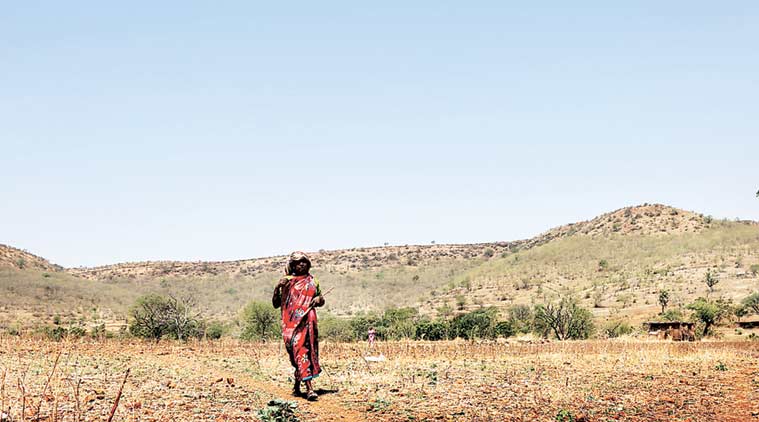 18000 village declared drought prone in Maharashtra. (Source: File Photo)
18000 village declared drought prone in Maharashtra. (Source: File Photo)
The Maharashtra government has turned its focus on effective management of drinking water and animal fodder as part of measures to tackle the severe drought in 18,000 villages in the state. The preliminary assessment is, there would be no shortage of foodgrain even if there is a 15-20 per cent crop loss in the kharif season.
“Drought remains the biggest challenge. The state government has started multi-pronged measures to comprehensively address the problems across 18,000 villages, which have been declared drought-affected across Maharashtra,” Chief Minister Devendra Fadnavis said.
Two key decisions taken relate to management of drinking water and animal fodder at the taluka level for which district collectors and revenue officials have been directed to requisition public water structures. The decision has been taken to prevent exploitation of water from existing structures, including jalyukt shivar projects, irrigation wells, dams and canals.
Secondly, the government is encouraging cultivation of fodder adopting the hydroponic method to ensure there is no shortage of fodder. The hydroponic system is practised widely in Netherlands and Australia. Officials have been told to create awareness and work with farmers to promote the hydroponic model of farming, which requires less water. Besides, under this method, fodder is generated within eight to 10 days. Under this method, large trays are designed through which water is allowed to percolate in a regulated manner soaking the cereals, letting them sprout and grow. Fodder is created from maize, wheat, jowar or bajra.
“If the dry spell across 18,000 villages continue till May-June, the fodder shortfall could be up to 25,000 metric tonne,” an official in the agriculture department said. However, he indicated that there would be some patches of agricultural land where individual farmers could cultivate maize drawing water from their farm ponds.
Fadnavis, who is reviewing the situation almost daily, has directed the departments of agriculture, relief and rehabilitation, revenue, labour, cooperation and marketing to be prepared for any contingency.
Sources said eight districts in Marathwada, which received an average 50 per cent rainfall, will require maximum drought relief.